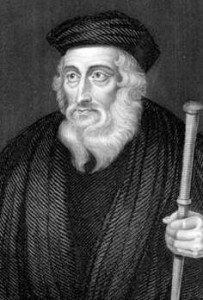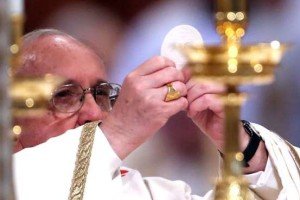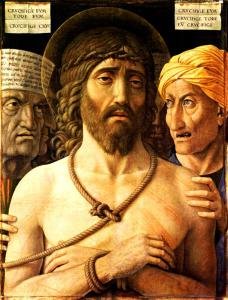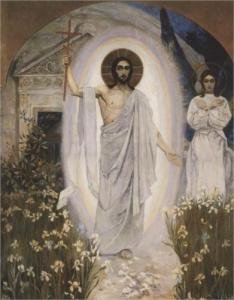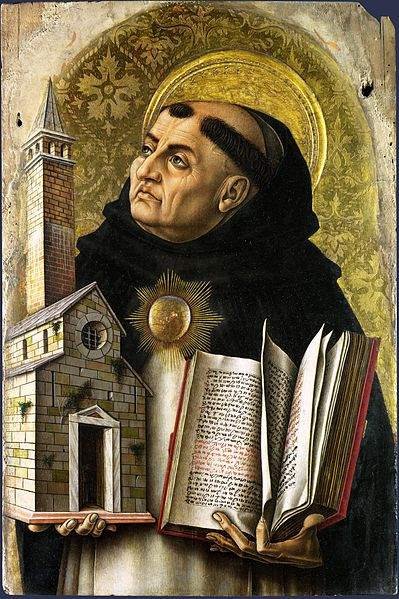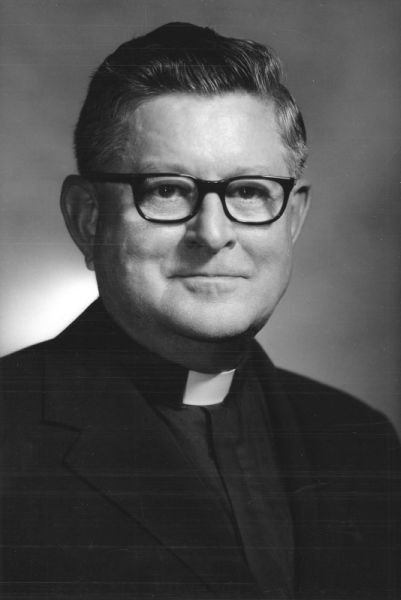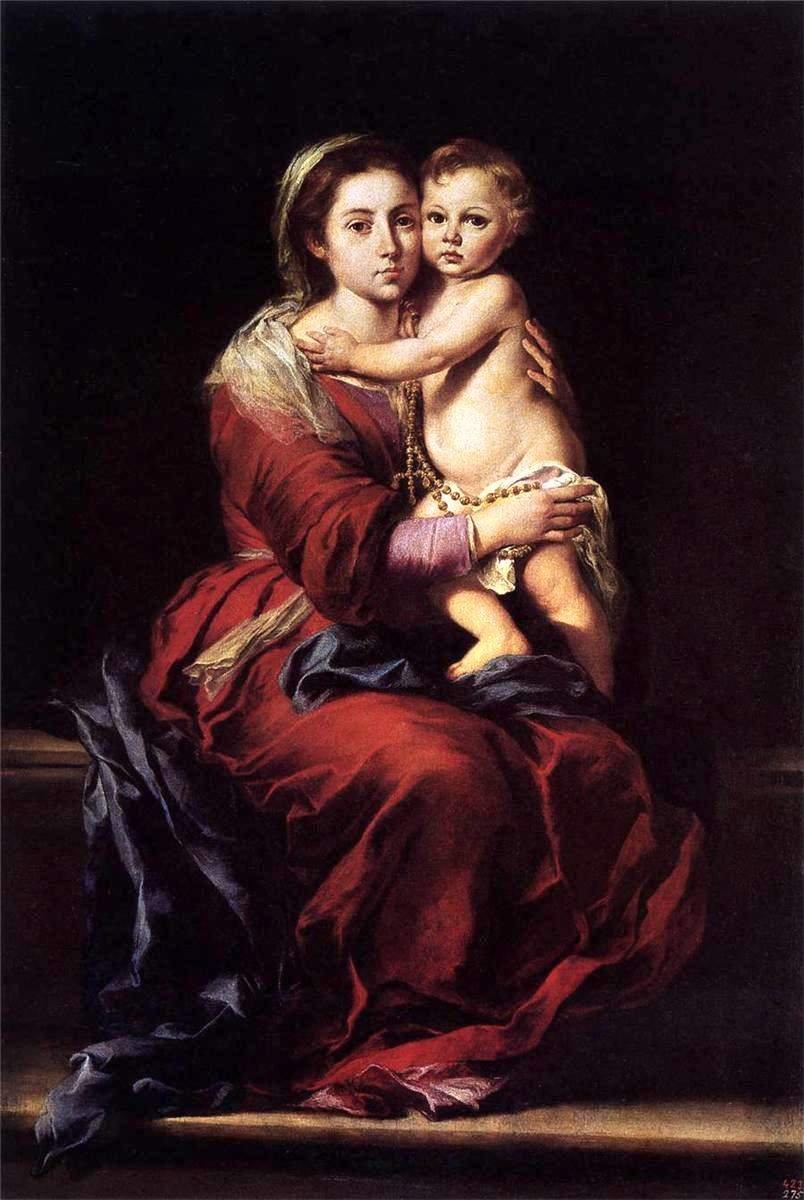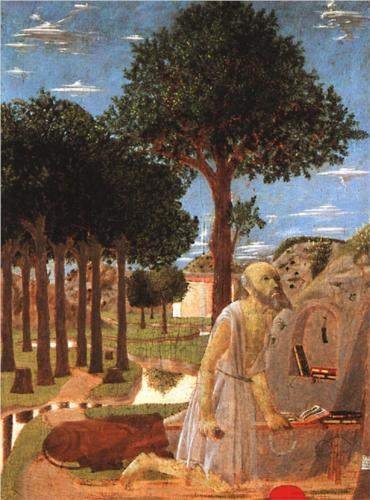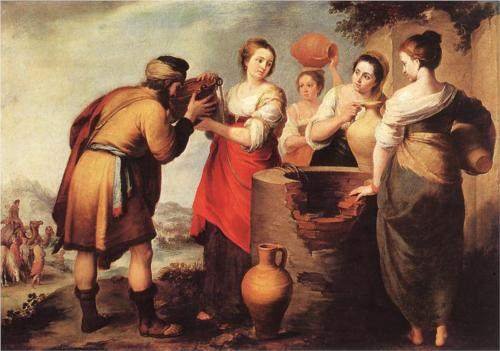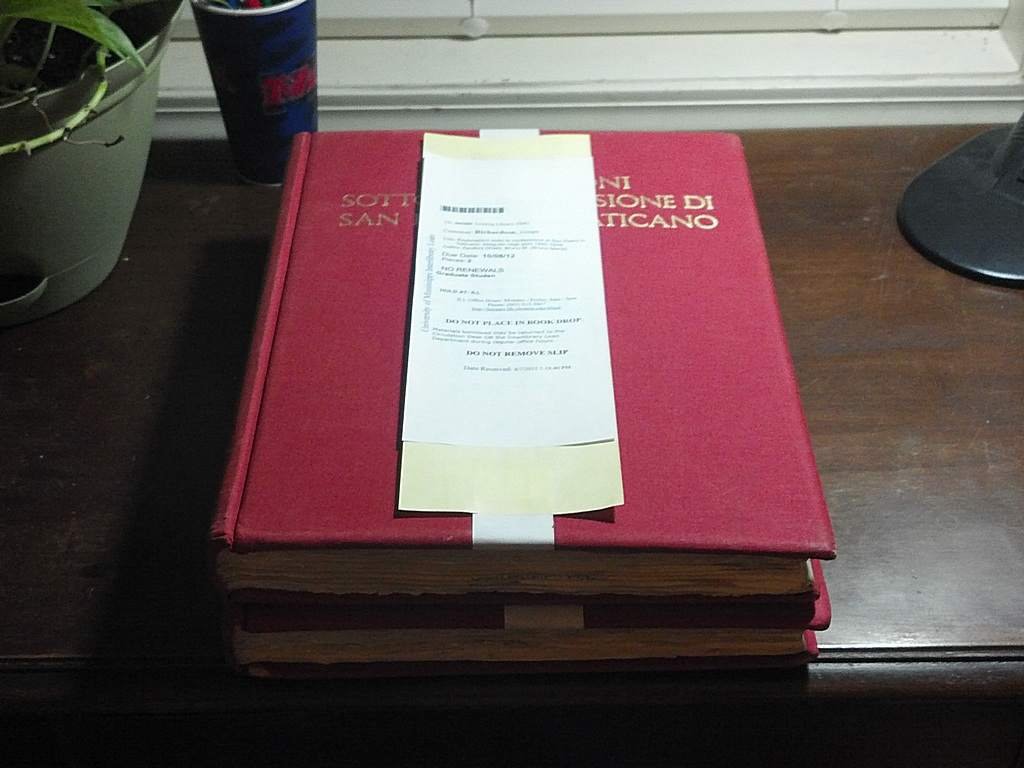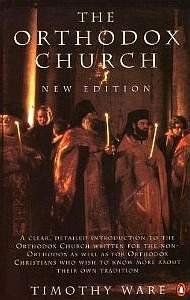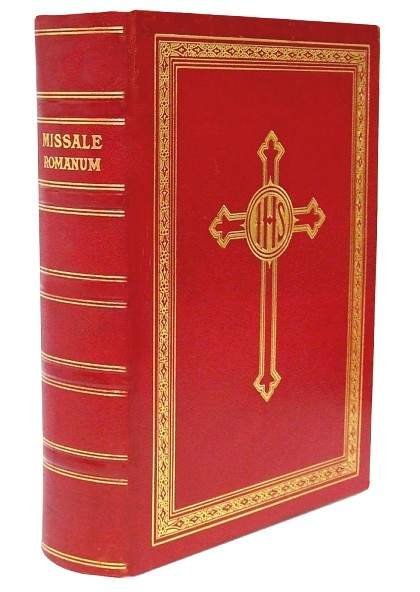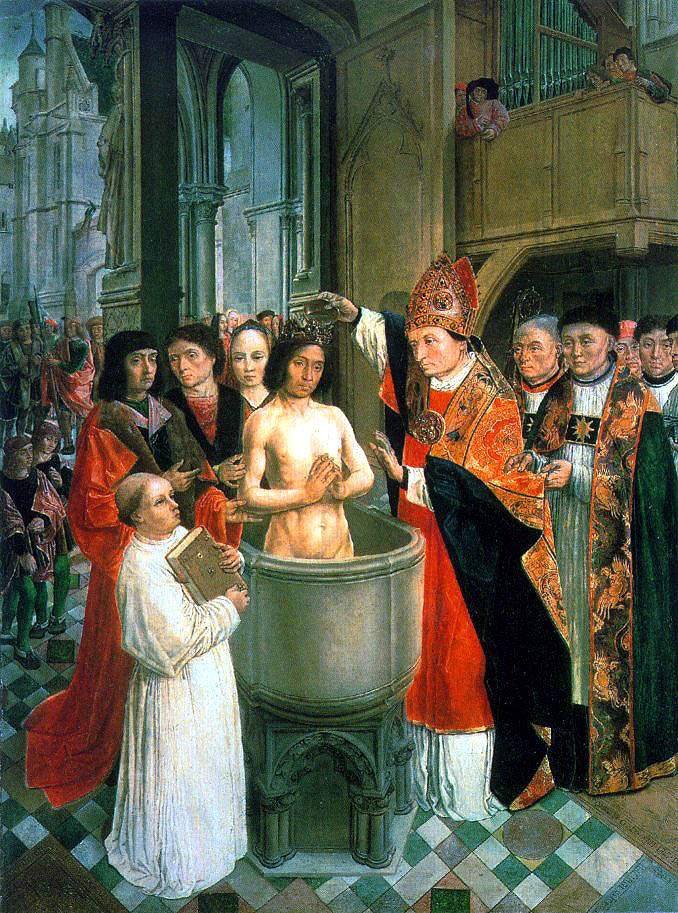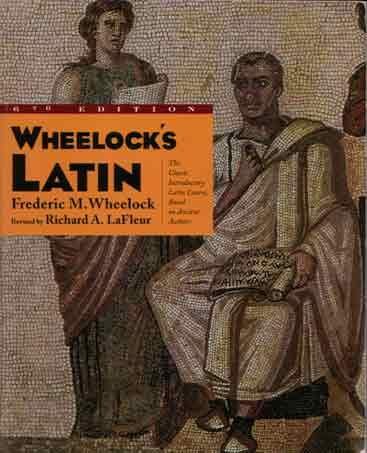A recent commenter complained, as Protestants often do, that there is “no biblical basis” for the New Testament priesthood. My immediate response: Of course there is. There is ample demonstration throughout the New Testament of ministers — deacons, presbyters, and bishops — who are called to serve the Lord and the Church in a special way and appointed to that purpose. The Greek word presbyter (πρεσβύτερος [presbyteros]), even, is the root of our English word priest. Even saying it, though, it struck me as odd: If the New Testament Greek word presbyteros is the origin of the English word “priest,” why is it that the Old Testament priesthood is translated with that word in English today, and not the New Testament?
If fact, the word priest is the word applied in English to any religious minister in any religion, especially to one who makes sacrifices. But the word for those ministers in each of the various source languages is not priest or anything related to it. So what happened? How did a Christian minister come to be called a “priest” at all? How did this word that originally referred to the New Testament Christian minister come also to be applied to a Jewish minister of the Old Covenant, and in fact to any religious minister? And how is it that, in English today, this word “priest” no longer refers strictly to Christian ministers at all, such that modern Bible translations use the word in the Old Testament (in which it has no historical or etymological root) but not the New Testament (from which it actually derives) — and Protestant Christians are left to question why the New Testament ministry is even called a “priesthood”?
In answering these questions, I embarked on a fascinating journey through language, etymology, and Bible translation, uncovering surprising accidents of translation, usage, and reaction.
The complaint of some Protestants that the “priesthood” of the Catholic Church has no biblical basis has two separate fronts: a linguistic one, opposed to the use of the word “priest,” and a theological one, opposed to the idea that the New Covenant of Christ has any need of a “priesthood” akin to that of the Old Covenant. Regarding the first point, I will show that the use of the word “priest” in English to describe the ministers of the Christian New Covenant is entirely appropriate, and the use of that same word to also describe ministers of the Jewish Old Covenant is mostly the result of a linguistic accident. I will address the second point in another post.
I. The Words of Scripture
A. “Presbyters”
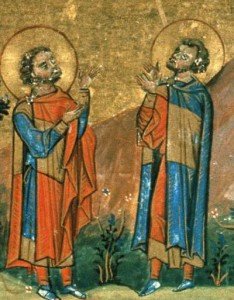
From an icon of Eugene and Macarius, presbyters and martyrs at Antioch (Wikimedia).
As any student of the New Testament knows, St. Paul instructs us in Scripture, according to most modern Bible translations in English, about the ministry of elders and overseers. There is no mention at all in many recent translations of “priests” or “bishops” — leading Protestant readers especially to presume that the Catholic priesthood has no basis in Scripture, and stems only from “traditions of men.” In this case, though, the titles used in English in the Catholic, Orthodox, and Anglican churches are primarily an etymological tradition (handed down by language and words) that does have a very firm basis in Scripture.
Modern Bible translations are correct in their translations of the original meanings of the Greek words used in the New Testament. The Greek word translated “elder” is πρεσβύτερος [presbyteros], and in Classical Greek, it literally refers to an elder or older man. Likewise, the word translated “overseer” is ἐπίσκοπος [episkopos], meaning literally one who sees (skopos = Latin scopus) over (epi) others. These two offices were apparently more or less equivalent in practical biblical usage (cf. e.g. Titus 1:3, 5).
But almost immediately upon their introduction, these terms came to have meanings apart from their literal senses and apart from the literal interpretation of Scripture, referring specifically to the offices which they named in the developing Christian Church. Timothy, the recipient of Paul’s epistles, by all appearances was an elder or overseer, exercising the duties appointed to those offices (e.g. 1 Timothy 4:11-16) and having the authority to appoint both (1 Timothy 3) — and yet Timothy was not an “older man” at all, but one to whom Paul exhorted, “Let no one despise you because of your youth” (1 Timothy 4:12). Ignatius of Antioch, writing in circa A.D. 107, commended an overseer who was likewise not an “older man” (Epistle to the Magnesians III). The office of presbyter, then, was not exclusively limited to “older men,” and came to mean more than the literal meaning of the Greek; and that word continued to be used, even when a younger man held the office.
The fact that the Christian office took on a different meaning than its literal Greek etymology is also evident in the fact that when the New Testament was translated into Latin, and when early Christian writers of the West wrote of Christian ministers, the Greek word πρεσβύτεροι [presbyteroi] was transliterated, copied directly into the Latin as presbyter, and not translated: “older men” in Latin would have been seniores (the word used in other locations of the New Testament where an older man is clearly meant, e.g. Matthew 27:1).
B. “Cohenim,” “Hiereis,” and “Sacerdotes”
We now turn to those Jewish religious officials in the Bible who are today generally translated into English as “priests.” The Old Testament Hebrew word for the ministers of the Old Covenant is כֹּ֣הֲנִ֔ים [kō·hēn·īm or cohenim], singular כֹּהֵן [kō·hēn or cohen]. Despite the fact that the word “priest” originates from the New Testament presbyter, and that that word has no immediate, etymological connection to the ministry of the Old Covenant — these Hebrew ministers came to be called “priests” in English, and in fact there is no other word in English that can adequately be applied to them or what they did.
The same Hebrew word cohenim was used to describe Egyptian religious ministers (Genesis 41:45) and ministers of Baal (2 Kings 10:19), Chemosh (Jeremiah 48:7), and others. So it appears that even in Hebrew the word was a generic term for what a minister did, his role and relationship to a divine cult, and not anything specific to the Hebrew God or covenant. It is fitting, then, that when the Hebrew ministers were described in other languages, they were likewise described with those languages’ words for a sacrificing religious minister.
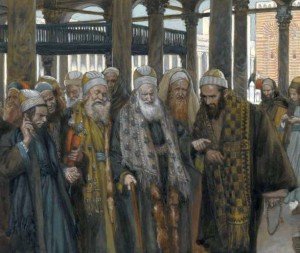
James Tissot, The Chief Priests Take Counsel Together (c. 1890) (Wikimedia).
In the Greek New Testament, when the Jewish religious officials are described in the Gospels, or when Jesus is called our “high priest,” the Greek word used is ἱερεύς [hiereus], plural ἱερεῖς [hiereis], from ἱερός [hieros], hallowed or holy [cf. English hieroglyphics, “holy symbols”]: meaning a minister in the cult of a god, especially a minister who makes sacrifices. It is the same word used in Greek for the ministers of the pagan Greek religion. In the Greek Septuagint translation of the Old Testament, the cohenim of the Old Covenant were likewise translated as hiereis.
Likewise, when the Christian Bible was translated into Latin, and when the Old Testament was described by the Latin Fathers of the Church, the ministers of the Old Covenant (Hebrew cohenim or Greek hiereis) were translated as sacerdotes [singular sacerdos], literally those who make holy gifts [sacer (holy or sacred) + dos (gift)]. It is the word used in Latin for the ministers of the Roman religion as well as the Greek religion and other similar religious officials.
So in the earliest writings of the Hebrews, the ministers of the Old Covenant did not have a distinct, unique word applied to them. The Hebrew word כֹּ֣הֲנִ֔ים [cohenim] was a generic word for a sacrificing religious minister to any god. Accordingly, this word was translated into Greek and Latin with those languages’ words for sacrificing religious ministers, ἱερεῖς [hiereis] in Greek and sacerdotes in Latin. These words cohenim, hiereis, and sacerdotes have no essential connection to the Greek word πρεσβύτερος [presbyteros], originally denoting an older man but in Christian usage coming to refer to the office of presbyter, a presiding elder at a local church.
II. Words in Time
A. “Priests”

The Venerable Bede translating John. Bede was contemporary with these linguistic developments in English.
How, then, did presbyters come to be known as “priests” in English? It is important to note that the English language first developed (as Old English, the language of the Anglo-Saxons) in the Christian era, only after the Anglo-Saxons had been Christianized in the seventh century A.D. That being the case, our historical evidence of the English language has no surviving indigenous terms (that I’ve been able to discover) for religious ministers.
Thus from the very beginning in English, Christian ministers — the presbyters of the New Testament — became known as prēostas (priests) — the term simply being adopted from Latin biblical and ecclesiastical language. The term bisceop (bishop) was likewise simply adopted from the Latin episcopus (Greek ἐπίσκοπος). On the other hand, Old English adopted the word sacerd (plural sacerdas), from Latin sacerdos, to refer to the priests of the Old Covenant, and in fact as a generic word for any priest (as sacerdos is in Latin). Jewish and pagan ministers were also sometimes called bisceopas (bishops) in Old English. Only Christian ministers were thus originally known as priests in English, and Jewish and other ministers called something different. From the very earliest English manuscripts, there was some overlap in the use of the word bishop.
By the Middle English period (post-Norman conquest), however, the word sacerd had fallen into disuse, and prēost became the generic term for any religious minister. This is the term that came to be used to describe Christian ministers, pre-Christian pagan ministers, Jewish ministers, and Greek and Roman ministers, and any other religious office. Because ministers in their adopted Christian religion were called “presbyters,” it is from this term that the Anglo-Saxon people eventually adopted the word for all religious ministers. Historical linguists are uncertain how exactly the Greek and Latin word presbyter phonologically evolved into the Anglo-Saxon prēost. Perhaps, the Oxford English Dictionary suggests, a late Latin form of presbyter was prebester, leading to prēost and similar developments in other Germanic languages. It is also uncertain why the generic term sacerd was lost.
So rather than the Catholic Church “inventing” the idea that New Testament Christian ministers were priests in analogue to the Old Testament priesthood, quite the opposite happened: The English language, developing around the Christian religion, called Christian ministers priests first. The cohenim, the priests of the Old Covenant, came also to be called priests only after the Christian ministers, because they were seen to be analogous to Christian priests, not the other way around.
So we find, for example, that when John Wycliffe made the first complete translation of the whole Bible into English, in the late 14th century, he translated the ministers of both the New Testament and the Old Testament as priests:
For cause of this thing Y lefte thee at Crete, that thou amende tho thingis that failen, and ordeyne preestis bi citees, as also Y disposide to thee. (Titus 1:5)
And the preest schal brenne tho on the auter, in to the fedyng of fier, and of the offryng to the Lord. (Leviticus 3:11)
Even Wycliffe, a proto-Protestant, understood the ministers of the New Testament to be rightly called priests, and the Latin word presbyter he was translating to be the root of the English word priest. Wycliffe, too, translated the ministers of the Old Testament — sacerdotes in the Latin — as priests in English. As tempting as it is to pin this coincidence on Wycliffe, it is unclear how much influence Wycliffe’s translation had on later translators. His translation choices probably reflected the common usage of his day: the ministers of both the Old and New Testaments were called priests. (Wycliffe also retained the traditional English translation of bishop for episcopus.)
The original meaning of the Greek πρεσβύτερος [presbyteros] as “elder” had thus been lost in translation: but then again, the identity of the Christian presbyter as an “older man” had ceased to be essential to the office almost as soon as it originated (see I.A.3 above). Early English speakers, and the earliest translators of Scripture into English, likewise saw the office of “priest” as distinct from its etymology.
B. “Elders”
With the coming of the Renaissance and eventually the Protestant Reformation, there was a renewed interest in the original texts and languages of the Scriptures. In the early sixteenth century, the first polyglot editions of the Scriptures, including the Greek, Hebrew, and Aramaic texts, were printed. This paved the way for the work of William Tyndale and other Englishmen who translated the Scriptures directly from their original languages into English.
Tyndale, translating the New Testament into English from the original Greek, translated πρεσβύτερος [presbyteros] according to the literal meaning of the Greek: he translated it elder. But not even Tyndale objected to calling these Christian officers priests. Tyndale, in fact, makes an essential connection between the elders of the Old Covenant and the elders (presbyters) of the New Covenant:
In the Old Testament the temporal heads and rulers of the Jews which had the governance over the lay or common people are called elders, as ye may see in the four evangelists. Out of which custom Paul in his pistel and also Peter, call the prelates and spiritual governors which are bishops and priests, elders. Now whether ye call them elders or priests, it is to me all one: so that ye understand that they be officers and servants of the word of God, unto the which all men both high and low that will not rebel against Christ, must obey as long as they preach and rule truly and no longer. (“W.T. unto the Reader,” preface to 1534 edition of New Testament)
The fact that ministers in the Anglican Church continued to be called priests indicates that English-speakers at the time of the English Reformation saw no disconnect between the words presbyter and priest — in fact probably recognizing their essential and etymological connection.
In the Old Testament, Tyndale likewise translated the word כֹּ֣הֲנִ֔ים [cohenim] as priest. By the 1530s, there was simply no other word in English to capture the meaning. As the English language developed, priest had become the word for any religious minister, especially one who sacrifices, thus becoming synonymous with the Latin sacerdos.
(Tyndale, on the other hand, retained the traditional English translation of bishop for ἐπίσκοπος [episkopos], as does the King James Bible — leading to a generally greater acceptance of that term among Protestants.)
The heirs to Tyndale’s translation, including the King James Bible and every major English translation since (including most Catholic ones) have translated the word πρεσβύτερος [presbyteros] as elder. There is certainly a element of reaction and even rebellion in some Protestant translations, particularly in more recent ones: a conscious rejection of the idea of a New Testament ministerial priesthood. It is worth noting that they translate the words πρεσβύτερος and ἐπίσκοπος [episkopos] according to their literal, primitive meanings as elder and overseer, but not the word διάκονος [diakonos], which is rendered not by its literal meaning of servant but by the traditional deacon in most English translations. This acknowledges that the word diakonos here has taken on an additional and traditional meaning, referring to the Christian office, more than its literal meaning of servant. Why not, then, leave the other offices to their traditional renderings as priest and bishop — which likewise have taken on additional, traditional meanings more than elder and overseer? The reaction seems particularly pronounced for the word priest, given that the same word is now applied to the Old Testament priesthood, and there is an understandable effort to make a distinction between the two.
Over time, as the English language continued to evolve, the etymological connection between presbyter and priest was lost and forgotten — such that I was taken aback to learn of it as I was becoming Catholic, just as many others are.
Conclusion
The premise — which I myself held once — that to call the Christian ministers of the New Testament “priests” is an innovation not supported by Scripture — is false on its face. Stemming directly from the word in the original Greek, πρεσβύτερος [presbyteros] or presbyter, the word “priest” was the original term for Christian ministers in English and a perfectly appropriate one. The ministers of the Old Testament — כֹּ֣הֲנִ֔ים [cohenim] in Hebrew — were originally called sacerdas (after Latin sacerdos) in Old English, and only in time, as an analogy to Christian priests, came to be called priests in English also.
It should be noted, too, that equating the priests of the Old and New Covenants with a single word is not endemic to Catholicism but only to English and other Germanic languages (though French, with Germanic influence, seems to do the same). In several of the Romance languages (Spanish and Italian notably), the words for priest used in Catholic teaching are still more obvious cognates to presbyter (presbítero and presbitero respectively) — while those languages still refer to priests of the Old Covenant as sacerdotes and sacerdoti. In those languages, Christian priests can also be called sacerdotes in analogue to priests of the Old Covenant.
This reflects another development that took place long before even the development of the English language, that no doubt contributed to the ministers of both the Old and New Covenants being called priests in English: Even in Greek and Latin, Christian ministers came sometimes to be referred to as ἱερεῖς [hiereis] or sacerdotes. This appellation, which can be found in some of the very earliest Christian writers such as Tertullian, Cyprian, and Cyril, was primarily by analogy: Christian priests were like the cohenim of the Old Testament in their ministry toward God and His people, adminstering Jesus’s work as our high priest (ἀρχιερεύς [archiereus]) to the Christian flock. In this sense, priests became synonymous with sacerdotes first in Greek and Latin — paving the way for them to become synonymous in English.
And this begs the question, and the second point of the Protestant charge: Is there any analogue between the priests of the New Covenant and the cohenim of the Old Covenant? Is the priesthood of the Church a sacrificing priesthood, as the Old Testament priesthood certainly was and as the Greek term ἱερεῖς [hiereis] and Latin term sacerdotes understand? Were the Church Fathers correct in applying this analogy, and is there any merit to referring to the priests of the Old and New Covenants by the same term, as we do in English? Or were the Protestants correct to stress the distinction between the two orders? How did the early presbyteri of the Church themselves understand their role? I will strive to address these questions in my next post, so don’t go away!






